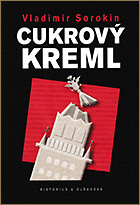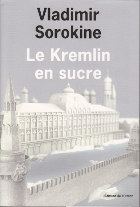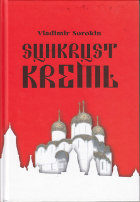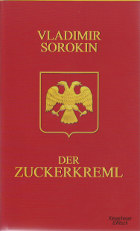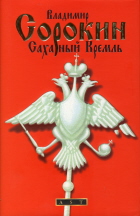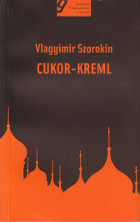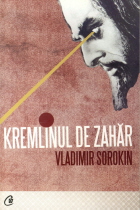Vladimir Sorokin
Sugar Kremlin
Proposal
Published by
- AST Publishers, Russia
- Èditions de l’Olivier, France
- Gondolat Kiado, Hungary
- Curtea Veche, Romania
- Kiepenheuer & Witsch, Germany
- Folio, UkraineArgo Publishers, Estonia
- W.A.B., Poland
- Geopoetika Publishing, Serbia
- Atmosphere libri, Italy
- Arka e Noes Editions, Albania
- Norstedts, Sweden
- Pistorius & Olsanska, Czech Republic
“’Sugar Kremlin’ is even more frightening than “One Day in the Life of an Oprichnik.” The living organism that is described there has stretched out its tentacles everywhere. A caricature of life twenty years from now is laid out before us in all its horror by an author with a cold and merciless view of life.” (Pre-publication review in Vlast)
“Sugar Kremlin” takes place in the same time period as Sorokin’s “A Day in the Life of an Oprichnik,” in the year 2028. It is not, however, a sequel. The book consists of 15 chapters, stories, scenes, and miniatures, with different forms and different characters, but with a recurring item from the title: an exact copy of the snow-white Kremlin, with its towers and gates, made entirely out of sugar, the Russian sovereign’s gift on Christmas Eve. Thousands of these marvelous creations are being given away on Red Square to lucky children, and also to some dissidents who delight in one at a secret meeting, as do beggars. There are also Sevastyanov, a civil servant at the Lyubyanka prison whose specialty is torture, a dwarf from the troupe of court-jesters at the Kremlin, and the whores in a bordello.
Andreas Tretner, Sorokin’s German translator, says that “the author has succeeded in turning the Sugar Kremlin into a leitmotiv, a meta-symbol that appears in each of the texts in different, original ways. It is simultaneously an object of devotion and an ‘ersatz’ satisfaction for the people, a consolation for them to suck on.
In contrast to “A Day in the Life of an Oprichnik,” with its linear progression, “Sugar Kremlin” is a puzzle of colorful episodes that come together as a portrait of totalitarian society as a whole. As Sorokin moves from story to story, he draws the reader through the dark side streets of life in Russia, creating a sort of metaphysical encyclopedia of the Russian soul. In an interview with Grani.ru, Sorokin said “I’ve tried to distill the taste of an extract of Russian power. It’s the taste that you get when you mix vodka, snow and blood—with six teaspoons of sugar added.”
The author himself calls “Sugar Kremlin” a “Greek Choir”. Sorokin is considered a writer with an unlimited palette of styles and all the colors that this puts at his disposal. In one book, he presents a wide variety of genres and tones, with far-ranging aesthetic methods—from an ironic mini-remake of his first novel “The Queue,” to a reprise of the style of parody that was “Marina’s Thirtieth Love.”
